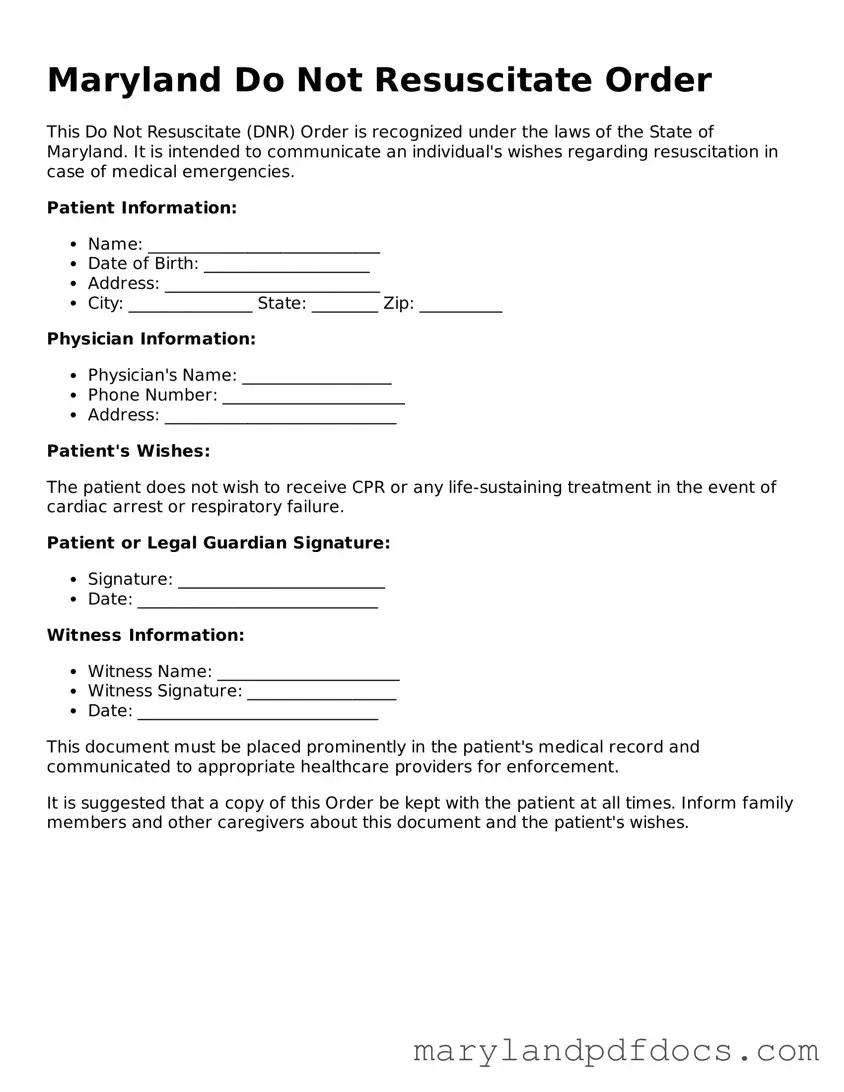What is a Do Not Resuscitate (DNR) Order in Maryland?
A Do Not Resuscitate Order is a legal document that allows a person to refuse resuscitation in the event of cardiac arrest or respiratory failure. In Maryland, this order is typically used by individuals who have serious health conditions and wish to avoid aggressive medical interventions that may not align with their personal wishes. It is important for individuals to discuss their choices with their healthcare providers and loved ones before completing this order.
How do I obtain a DNR Order in Maryland?
To obtain a DNR Order in Maryland, you need to have a conversation with your healthcare provider. They will assess your medical condition and discuss your wishes regarding resuscitation. If you and your provider agree that a DNR Order is appropriate, your provider will complete the official Maryland DNR form. This form must be signed by both you and your physician to be valid.
Where should I keep my DNR Order once it is completed?
Once your DNR Order is completed and signed, it is crucial to keep it in a place where it can be easily accessed by medical personnel. Many individuals choose to keep a copy in their medical records, while others may carry a wallet card that indicates their DNR status. Additionally, it is advisable to inform family members and caregivers about the location of the document, so they can provide it to emergency responders if needed.
Can I change or revoke my DNR Order?
Yes, you can change or revoke your DNR Order at any time. If you decide to change your mind, you should notify your healthcare provider and complete a new DNR form if necessary. To revoke the order, you can simply destroy the original document and inform your healthcare team. It is also helpful to communicate your wishes to family members and caregivers to avoid confusion in emergency situations.
What should I do if I am admitted to a hospital with a DNR Order?
If you are admitted to a hospital and have a DNR Order, it is important to provide the hospital staff with a copy of your order as soon as possible. This will ensure that your wishes are respected during your stay. The hospital staff will review your DNR status and may ask additional questions about your healthcare preferences. Open communication with your healthcare team will help ensure that your wishes are honored throughout your treatment.
